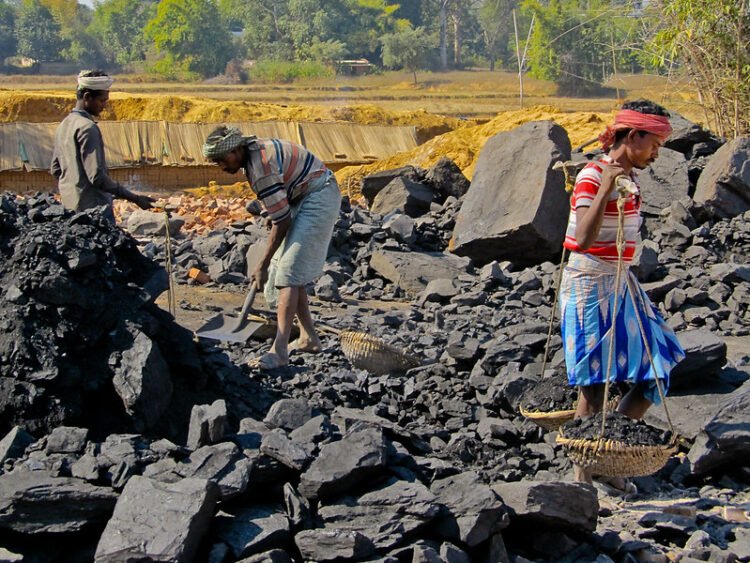Sangeeta Waldron feels the most advanced economies in the world are not yet ready to move on from fossil fuels.
By Sangeeta Waldron
I felt I owed it to many of you to write this piece, about India ‘watering down the Cop26 agreement regarding coal.’ Especially as I have been heralding India’s green efforts for the past year and again more recently. I was disappointed when I read the news at it came out on 13 November, because up until then India seemed to be leading the way at the climate change conference in Glasgow. But I think it is important to put India’s actions into context, as while getting rid of coal may be possible for some developed nations, it is not so simple for developing countries.
I am not writing this to let India off the hook, but sometimes I believe the soundbites don’t give us the complete picture.So, let’s start by saying the writing was already on the wall in October, before Cop26 had started. A BBC news report that came out on 26 October, where it had seen leaked documents that showed India had told the United Nations (UN) that, “Coal will continue to power much of India for the next few decades.” These documents showed that India had been one of several countries who had been lobbying the UN against completely moving away from fossil fuels.
This September, we also had US climate envoy John Kerry receive no clarity on how India planned to achieve its net zero emissions target when he visited the country. India is the world’s third-largest carbon emitter, after China and the US.
Advanced Global Economies Are Not Ready to Move on From Fossil Fuels
The most advanced economies in the world are not yet ready to move on from fossil fuels. Alarmed by issues with gas supplies, some European countries including Britain began to define “alternative energy” sources as a return to coal-fired power stations rather than renewables.
If the most advanced economies in the world still invest in coal to meet their energy requirements than renewables, how do developing countries sign up to drastic emissions cuts without seriously diminishing their economic prospects? On average, a typical American uses 12 times more electricity than the typical Indian, according to the World Energy Council. There are over 27 million people in India who don’t have electricity at all.
Yes, this is a complex topic and India faces a difficult choice that will have consequences for the world. Net-zero has become, particularly in the West, a litmus test for how seriously a country or corporation takes its obligations to the planet.
The Problem Is Complex
The problem gets more complex, as there are as many as four million people who are employed directly and indirectly in India’s coal industry, according to a recent report from the Brookings Institution. Many of the coal reserves lie in the east – the so-called coal belt – in the states of Jharkhand, Chhattisgarh, and Odisha. In these areas, coal also powers the economy. It’s the lifeline of the local communities, which are some of India’s poorest. Many in these regions of India, argue that there needs to be a properly thought-out strategy to transition from coal to cleaner energy resources to ensure those who depend on it are not left behind.
Ironically, numerous families who were originally displaced from their homes decades ago to make way for the mines, will once again be affected, because if these mines are phased out, these same people will face the risk of losing out again with their livelihoods. Communities in these areas remind us of the challenges in reducing the dependence on coal for meeting these requirements. According to the International Energy Agency, with a population of more than 1.3bn, India’s energy needs are set to rise more than any other nation in the next twenty years.
Private Corporations
Prince Charles has a solution, which he announced at the opening plenary session at Cop26 and is this – that private corporations need to lead the way and invest in new technologies and renewable energy, because they have the wealth, and are richer than many governments.
There is a race developing among India’s largest corporations to bring cheap renewable energy to consumers. Making a meaningful commitment, Gautam Adani has announced that his group will invest up to US $70 billion over the next decade, as it bids to become the largest renewable energy company in the world. The Adani Group is already the world’s largest solar player and Gautam Adani has repeatedly asserted his group’s ambition to harness technology and industry to make game-changing alternatives like green hydrogen a viable, affordable option.
India is making the shift to cleaner energy, with an ambitious target to draw 40 percent of its installed electric power from non-fossil fuels by 2030. Currently, renewables make up around a quarter. Many experts from leading think tanks, including the Council on Energy, Environment and Water in Delhi, say the country has made strides in this direction. For example, the Delhi metro system runs on more than 60 percent on solar power for its daily power needs.
The Problem is not India
So, as COP26 President Alok Sharma brought down the gavel on 13 November, it was India who was left looking like the primary holdout on behalf of coal. Yet it was Sharma who was part of the late discussions in the plenary hall and said China played a major role in pushing for softer language.
A Bloomberg Green news story reports, “Experts following the negotiations closely pushed back on the idea that India should be seen as responsible for the late change to the agreement, which must be produced by consensus. Some observers saw developed nations sharing responsibility for the watered-down coal language because they had resisted additional financial commitments to poor countries.”
While Brandon Wu, director of policy and campaigns for Action Aid USA, tweeted, “The problem is not India. The problem is the US and rich countries refusing to couch fossil-fuel phaseout in the context of global equity.”
Continue The Good Fight
So, the good fight goes on and we need to keep putting pressure on our own governments, because if we continue without action taken, data shows global warming could exceed 4C in the future, which could lead to devastating heatwaves, droughts, extreme rainfall, and floods. Millions could lose their homes to rising sea levels. We know that change in climate could lead to irreversible damage to our ecosystem – with the extinction of all species.
About the Author

Sangeeta Waldron is the global editor at India CSR. She is Founder of Serendipity PR & Media. Author of Corporate Social Responsibility Is Not Public Relations, published by LID Business Media.
Read more articles by Sangeeta Waldron







